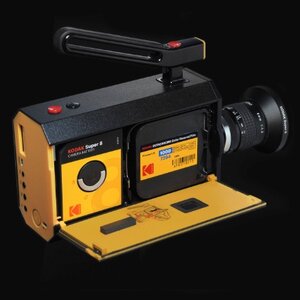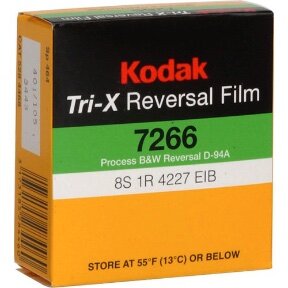The "new" Kodak Super 8mm camera is a bit of a lark in terms of it's value in the Super 8mm cinematography world and overall the camera is a bit overblown for what it's worth. I would contrast it to the modern series of Polaroid I-type film Bluetooth cameras that were released five years ago. For certain projects or events in a photographic perspective, these vintage formats are fun to occasionally incorporate even with the plethora of Ai film scratch or noisy filters available.
When it was still openly available at local camera shops with processing from Kodak, I first used Kodachrome 40 and Ektachrome 160 Super 8mm in 1996/97 to document weather, pretty late in the format game but for a budding meteorological cinematography type, I loved the grain, grittiness and it really taught me how to use light, conserve film and edit "in camera". I moved over to 16mm briefly, alongside modern video equipment in 2000/2001. The costs for color film, b&w and processing those 100ft reels were quite steep even then.
I last utilized Kodak Ektrachrome 100D silent color reversal Super 8mm, now a discontinued format, while documenting weather and storm chase expeditions in the northern Plains, Saskatchewan and Manitoba in 2012. The cost
then for a single three-minute cartridge from B&H Photo and Video in NYC was $40.00 per pack. Processing fees by Pro 8mm Burbank, formerly known as Super 8 Sound, where full frame scans were converted into a digital Quicktime H.264 or 4K format for editing on Final Cut Pro ran about $0.50 to $0.75 per foot plus tax. Expand that to multiple 400' reels of color film and the price goes up exponentially. Super 8mm is still "cheaper" than 16mm black and white or color silent, and believe it or not, you can still purchase and develop regular 8mm color/black and white reels, often available in larger metropolitan areas where film still tends to trend amongst students and professionals alike.
For anyone seriously interested in shooting Super 8mm or 16mm film at present for weather or just experimental films, I would avoid the new Kodak Super 8mm camera and suggest investing in a fully functional Canon 310XL, 518/SV, 814/XL, 1014 or Nizo S8 brand from the mid 1970's or early 1980's. Even some cheaper Kodak Ektasound or Instamatic point and shoot Super 8mm cameras work great too, and are quite affordable
when they still function! For 16mm, my go to cine camera was always a Canon Scoopic 16MS, of which I no longer have nor shoot on the format. Alternatively, spring loaded, wind up Bell & Howell cameras like the Filmo DL or Bolex H16,
if you can find one with original lenses, work great and are still used for assorted film projects I've noticed.
While prices for used gear has certainly shot up, it's worth it if one wants to make a trial run to learn the art of celluloid cinematography, just be mindful of how quickly the whole process can add up!
Blake
blakenaftel.com
threereelfilms.com
Instagram |
IMDb Pro |
TikTok |
YouTube





